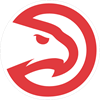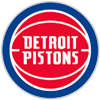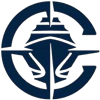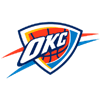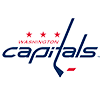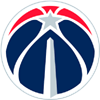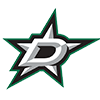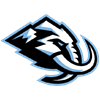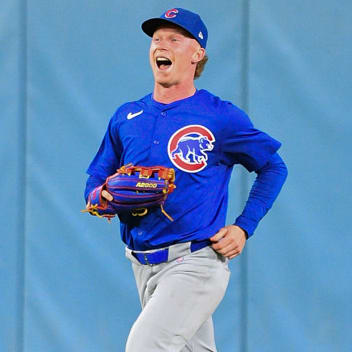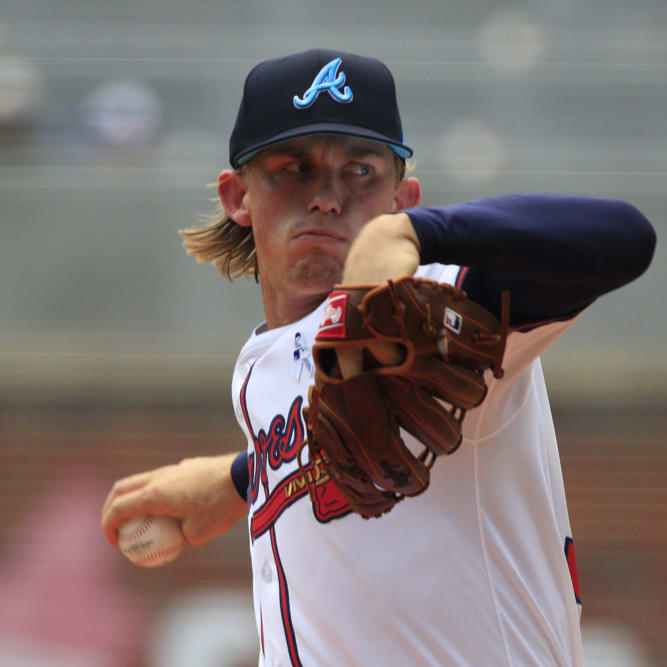- Rankings and tiers are for 2024 fantasy value only
- Only pitchers with fewer than 50 MLB innings and fewer than 45 days on the active roster were considered
- ADP is from NFBC 15-team Draft Champions that took place after Jan. 1 (72 drafts worth of data)
- I've included my player shares through six Draft Champions and one NFBC 50
There's no sugarcoating how volatile this market is. I'm bullish on many young pitchers who are still somewhat unproven like Gavin Williams, Brandon Pfaadt, Bryce Miller, Shane Baz, Emmet Sheehan and Louie Varland, but none of them are prospect eligible.
We don't know which pitching prospects will stay healthy and log significant big-league innings in 2024, but we know some will. This should be useful to those in draft-and-hold leagues, but it could also be useful in-season when many of these prospects will be getting the call for their big-league debuts. We won't have the same quantity of high-end pitching prospects debuting in 2024 as we had in 2023, but there's no doubt MLB teams are more aggressive with getting their best young pitchers to the majors than they used to be.
No subset of players can move the needle from a value standpoint more (in my opinion) in spring training than pitching prospects. With less than a month before the season, we get to see their pitch velocities, stuff metrics and high-quality video of their pitch movement. And in some cases we get to see
- Rankings and tiers are for 2024 fantasy value only
- Only pitchers with fewer than 50 MLB innings and fewer than 45 days on the active roster were considered
- ADP is from NFBC 15-team Draft Champions that took place after Jan. 1 (72 drafts worth of data)
- I've included my player shares through six Draft Champions and one NFBC 50
There's no sugarcoating how volatile this market is. I'm bullish on many young pitchers who are still somewhat unproven like Gavin Williams, Brandon Pfaadt, Bryce Miller, Shane Baz, Emmet Sheehan and Louie Varland, but none of them are prospect eligible.
We don't know which pitching prospects will stay healthy and log significant big-league innings in 2024, but we know some will. This should be useful to those in draft-and-hold leagues, but it could also be useful in-season when many of these prospects will be getting the call for their big-league debuts. We won't have the same quantity of high-end pitching prospects debuting in 2024 as we had in 2023, but there's no doubt MLB teams are more aggressive with getting their best young pitchers to the majors than they used to be.
No subset of players can move the needle from a value standpoint more (in my opinion) in spring training than pitching prospects. With less than a month before the season, we get to see their pitch velocities, stuff metrics and high-quality video of their pitch movement. And in some cases we get to see how they stack up against the best hitters in the world. There will be pitchers who jump 100-plus spots worth of ADP in the spring and there will be others who suffer season-ending injuries before the regular season starts, that's just the nature of pitching prospects.
Big-League Experience I
1. Kyle Harrison, LHP, Giants, ADP: 273 (Shares: 2/7)
Harrison is the only pitching prospect for a decent team that I feel confident projecting to make his team's rotation out of camp. He showed much better control vs. human umps in the majors than he did against robo umps at Triple-A, which is intuitive, especially given his high-strikeout approach and specific arsenal (high four-seamers, sliders out of the zone, etc...). I like some veterans who go just after him (John Means, Luis Severino, Chris Paddack, Jameson Taillon and Dean Kremer) a bit more, but there's significant upside with Harrison, and at worst he'll be usable in home starts as long as he's healthy.
Premium Stashes
2. Paul Skenes, RHP, PIT, ADP: 336 (Shares: 1/7)
Nobody knows when Skenes, the No. 1 overall pick in the 2023 MLB Draft, will make his big-league debut. He won't have much of a workload restriction in 2024, given he threw almost 130 innings last year. For this reason, I wouldn't rule out Skenes making the rotation out of camp. If around March 20, Skenes has been one of, if not the best, Pirates starter in spring training, there's no real reason to send him to Double-A or Triple-A, especially considering he could win NL Rookie of the Year and net the Pirates a 2025 draft pick. All that said, the guy Skenes gets compared to most, Stephen Strasburg, made 11 starts in the upper minors before getting the call in 2010.
3. Cade Horton, RHP, CHC, ADP: 425 (Shares: 3/7)
Horton, who had Tommy John surgery in 2021, built up to 88.1 innings last year, and at times he was utterly dominant at High-A and Double-A. He has a four-pitch mix headlined by an upper-90s fastball and a 70-grade slider. Horton is a better prospect at this stage of his development than guys like Corbin Burnes or Brandon Woodruff were when Craig Counsell's Brewers broke those guys in out of the bullpen, but we can't rule out a similar developmental approach with Horton. He didn't get an invitation to big-league spring training, and I'd guess the Cubs have a plan in place to slow play him out of the gates so that he can pitch into October. There's no question that he'll profile as one of the team's five best starting pitchers by midsummer, health permitting.
Big-League Experience II
4. Mason Miller, RHP, OAK, ADP: 212
Everyone knows Miller has great stuff, and he should post strong ratios with a high strikeout rate while he's healthy. I was fading him in Vol. 1.0 because I didn't trust him to handle a starter's workload, and since then, we've received confirmation from the team that they don't trust him to handle a starter's workload either this season. Now, his path to fantasy relevance in 5x5 roto leagues is to get saves for the least talented roster in the league and to provide ratio and strikeout help when he's not getting saves. There were 29 saves spread out among seven Athletics pitchers in 2023, with Trevor May leading the way with 21. When I'm taking a reliever in the first 300 picks or so, saves are the main thing, and once the very best guys are off the board, saves are the only thing. Miller should be near the bottom of the league in saves among pitchers who held the job all season — if he holds it all season — and he still carries as much injury risk as any closer.
5. Keaton Winn, RHP, SF, ADP: 416 (Shares: 1/7)
Essentially a non-prospect heading into 2023, Winn threw his 89-mph splitter 55 percent of the time and his 96-mph fastball 41 percent of the time in his 42.1 MLB innings (100.1 total in 2023). It's an odd pitch mix, especially for a righty, but it worked OK for him while splitting time between working as a traditional starter and bulk reliever. It's kind of crazy that we're at this point with Winn, but I'm in the early stages of my eighth draft-and-hold of the offseason, and Winn keeps moving up my personal board. It's partially a testament to how shallow the crop of big-league ready pitching prospects is this year, but also a reflection of the value in having a guy who projects to break camp in the rotation for a decent team with a pitcher-friendly home park.
6. Max Meyer, RHP, MIA, ADP: 420 (Shares: 1/7)
Meyer has a nice home park, but last year, Jesus Luzardo led all Marlins starters with 10 wins and he needed 32 starts to get there. It seems irresponsible to project Meyer for more than five or six wins, given that this will be his first season back from Tommy John surgery and his run support will likely be in the bottom third of the league. With news that the Marlins are likely trading Edward Cabrera to Pittsburgh, I bumped Meyer from the bottom of this tier to the middle. Perhaps the A.J. Puk experiment lasts into May, but I expect Meyer to make 15-20 starts in the majors, health permitting.
7. AJ Smith-Shawver, RHP, ATL, ADP: 406 (Shares: 1/7)
Smith-Shawver even reaching the big leagues last year was a long shot. Given his age (21) and rapid rise through the minors, Smith-Shawver is a complete wild card from a projection standpoint. There's just so few instances in recent history of pitching prospects this young competing for a rotation spot on a team this good. The addition of Chris Sale pushed Smith-Shawver down my board a little, but I'm not running away from him in draft and holds. It makes sense for Bryce Elder to get the fifth spot out of spring training, but Smith-Shawver is as good a bet as anyone to be the first guy to get a look when there's an opening.
8. Gavin Stone, RHP, LAD, ADP: 497 (Shares: 4/7)
Stone fell on his face against big-league hitters, and the big-league numbers (6.64 FIP, 1.90 WHIP) and Pacific Coast League numbers (4.52 FIP, 1.31 WHIP) are pretty ugly for a pitcher we're considering in the top 500 for 2024. However, he showed signs of looking like the 2022 version and 2023 spring training version of himself down the stretch, and even incorporated a cutter and sinker midseason. He had a 1.73 ERA, 0.85 WHIP and 35 strikeouts in his final 26 innings at Triple-A and had a 3.52 ERA, 1.04 WHIP and 10 strikeouts in 7.2 innings over his final two big-league appearances. It's a tiny sample and the competition at Triple-A was pretty watered down when he was having that late-season success. However, Stone, whose changeup is his best pitch and who has shown he can handle a starter's workload, isn't the type of arm you move to the bullpen until you've exhausted all efforts to develop him as a starter. His team context is obviously elite and he was my No. 25 overall prospect in March of 2023. He's a prime post-hype sleeper at this price.
Stashes II
9. Jackson Jobe, RHP, DET, ADP: 474 (Shares: 1/7)
I feel pretty good about ranking Jobe as the second-best pitching prospect (behind Skenes) on my top 400, but I don't feel confident about when he'll make his big-league debut. Jobe, who turns 22 in July, only made one start at Double-A and tallied 79.2 innings total last season. The Tigers won 78 games last year, and they'll surely try to push up above .500 this season. Bringing up Jobe in the first half would align with that goal. He's talented enough that he could even make noise in spring training, but the Tigers have enough guys in the mix that Jobe would really have to separate himself and there'd probably need to be an injury to someone ahead of him. Jack Flaherty, Kenta Maeda and Matt Manning are hardly the most durable starters, so he'll get his chance at some point if he stays healthy.
10. Ricky Tiedemann, LHP, TOR, ADP: 380
I'm not going anywhere near Tiedemann at cost. He has primarily dealt with nerve damage rather than ligament damage, but the durability red flags are still glaring. Excluding the Arizona Fall League, where he logged 18 innings in four starts, we have to go back to July 1, 2022 to find the last time Tiedemann logged five innings in a start. His offspeed stuff, particularly his slider, is elite and Toronto lacks rotation depth, but I don't expect him up until June. He's probably not going to throw enough in the spring to be a realistic threat to break camp, and it'll likely be a careful build up at Triple-A in April and May.
11. Jared Jones, RHP, PIT, ADP: 483 (Shares: 5/7)
A year ago, I had Jones pegged as a potential closer long term, but he blew away my expectations last season and now I think he can be a high-strikeout starter if he maintains his current trajectory and stays healthy. He was a little unlucky at Triple-A (68.4 LOB%, .319 BABIP), but the main metric that impressed me was his 9.7 BB% over 82 innings as a 22-year-old in the highest level of the minors. That may not seem like a strong mark, but for a young pitcher with Jones' electric arsenal (upper-90s fastball, upper-80s slider), it was better than I was expecting. He'll be at Triple-A for at least another month or two, but he'll join Skenes in the big-league rotation sometime in the first half with good health.
12. Will Warren, RHP, NYY, ADP: 544 (Shares: 2/7)
The Yankees arguably have more legitimate upper-level pitching prospects than any other team, and Warren offers the best combination of upside and proximity. His 70-grade sweeper had a 20.6 SwStr% and his high-spin four-seamer touched 97 mph at Triple-A. He dominated down the stretch last year and is big-league ready. It's impossible to say how many Yankees starters will be healthy late in spring training, but Warren should be the first prospect to get a shot if he's healthy and there is a need.
13. Hurston Waldrep, RHP, ATL, ADP: 478 (Shares: 1/7)
There were rumors Waldrep was in consideration to make his big-league debut late last season, just weeks after he was drafted, amid all the injuries that hit Atlanta's rotation. Waldrep was my second-favorite pitcher (behind Skenes) in the 2023 draft, and now that is seeming like a consensus. His splitter is a 70- or 80-grade offering, and it all comes down to whether he can throw enough strikes — that was the knock for most of his college career although he peaked at the right time as a junior. This is a boom-or-bust stash.
Relievers I
14. Prelander Berroa, RHP, CHW, ADP: 641 (Shares: 2/7)
It's awesome that Berroa was traded from one of the most stacked bullpens to one of the weakest bullpens, moving from the Mariners to the White Sox as part of the return for Gregory Santos in early-February. However, it's not like Berroa was Seattle's seventh-inning arm last year. He languished at Double-A (the Mariners like to keep their pitching prospects out of the Pacific Coast League) for most of the season while working on his command. There should be more reporting this spring about the bullpen hierarchy, but Berroa probably has the highest ceiling of Chicago's current relievers. Granted, that doesn't factor in a potential conversion candidate like Michael Kopech, and Berroa could need a year of work as a setup man before his command is closer worthy.
15. Orion Kerkering, RHP, PHI, ADP: 381
Kerkering, who boasts a 98-mph fastball and a dastardly mid-80s sweeper, could theoretically pitch his way into the ninth inning. However, he probably won't be as good in 2024 as Craig Kimbrel was last year, and Kimbrel never got a full share of the saves in Philadelphia. I prefer Jeff Hoffman in this bullpen and I agree with the drafting public that Jose Alvarado should be the first Phillies reliever off the board.
16. Ben Joyce, RHP, LAA, ADP: 588
If you don't already know, Joyce has an average fastball velocity of 101 mph and he can touch higher. The Angels don't seem to have any intentions of trying to contend, so if Joyce throws enough strikes and stays healthy (two big if's), he could ascend to the ninth inning if Carlos Estevez (in the final year of his contract) gets traded or loses the job. That said, Joyce never pitched on back-to-back days last year, so the training wheels haven't fully come off.
Big-League Experience III
17. Joe Boyle, RHP, OAK, ADP: 442
Boyle has always had loud stuff, but he didn't have good enough command to even project as a ninth-inning arm, let alone a starter. He was good one time through the lineup against the Padres and then logged wins against the Tigers and Angels in late-September. I'd use Boyle at home against teams like the Tigers and Angels in 2024, but I wouldn't use him on the road without more of a sample against big-league hitters, and it's possible his command woes (17.8 BB% in the minors last year) resurface in spring training and he doesn't even make the big-league rotation.
18. Kyle Hurt, RHP, LAD, ADP: 558
Is Hurt a starter or reliever long term? That's still very much up in the air, but there's no denying the quality of his stuff. Unlike Gavin Stone, Hurt's got the high-octane fastball for high-leverage relief work if the Dodgers opt to go that route, but I assume they'll keep developing him as a starter in 2024 at Triple-A. He could be in a similar role to Ryan Pepiot this past season, splitting time between Triple-A and the majors while working in whatever role is needed when he's up with the big club. He was a faller in this version as the Dodgers just keep adding talent, and it might be more realistic for him to be getting saves at some point this season than for him to be a regular in the rotation.
19. Randy Vasquez, RHP, SD, ADP: 578 (Shares: 1/7)
Since Vol. 1.0, Vasquez got traded from one of the deepest pitching systems (Yankees) to one of the shallowest big-league rotations in the game. Vasquez throws a bunch of pitches, but his cutter and sweeper particularly have a ton of spin, and his fastball is OK (94.4 average mph). As things stand, he's the Padres' fourth-best starting pitcher, so while he may not be very exciting on paper, there should be some home-streaming potential and he could even break out if he shows decent command.
20. Sawyer Gipson-Long, RHP, DET, ADP: 379
Gipson-Long was being more severely over-drafted in October and November than any other pitching prospect, and while his ADP fell about 80 spots after the Kenta Maeda signing, he's still being massively over-drafted. Just because I didn't have him ranked at all on the top 400 prior to his debut doesn't mean he won't be good, but it's illustrative of his prospect pedigree and the way many scouts viewed him prior to his debut. His four big-league starts in September came against the White Sox, Angels, Athletics and Royals. I'd happily deploy him in 2024 against any of those teams if he's in the rotation, but he won't be in the Opening Day rotation and I wouldn't use him against most big-league teams.
21. Cade Cavalli, RHP, WAS, ADP: 663 (Shares: 2/7)
Cavalli has a horrible team context (hitter's park, terrible run support, bad defense) and is returning from March 2023 Tommy John surgery, but he's a lock to be in the Nationals' rotation once fully healthy and stretched out. He's also got a better combination of pedigree and stuff than anyone else in this tier, just know he won't be back until around midseason.
Stashes III
22. Robert Gasser, LHP, MIL, ADP: 454
What Gasser lacks in quality offerings (zero plus pitches, 92-mph average fastball velocity) he makes up for in quantity -- he threw over 100 four-seamers, changeups, curveballs, cutters, sinkers, sliders and sweepers at Triple-A. It's a pretty similar profile to Eric Lauer, whom the Brewers got in an earlier trade with the Padres. I'd take the over on 10 MLB starts for Gasser if you guaranteed me good health, but he lacks the type of upside I'm looking for in a pitching prospect with no MLB experience.
23. Christian Scott, RHP, NYM, ADP: 552
Scott turns 25 in June and hasn't reached Triple-A yet, but he was masterful last season at High-A and Double-A. Scott's BB% was below five percent at every stop in 2023, while his K% was north of 30 percent. Statistically, he really stands out, although his command, particularly his ability to command his plus mid-90s fastball, is what led to all that success. His offspeed stuff is just OK. Still, whenever a pitching prospect has this level of strike-throwing ability, they've got a chance to outperform their raw stuff.
24. Joey Cantillo, LHP, CLE, ADP: 618 (Shares: 4/7)
It's tough to say how much of Cantillo's 12.9 BB% at Triple-A was due to the automated balls and strikes system, as he also had a 14.4 BB% at Double-A. The 6-foot-4 southpaw's control could end up relegating him to a bullpen role long term. However, he's in a great developmental org., has a pretty clear path to the rotation (contending with the likes of Xzavion Curry and Hunter Gaddis if a spot opens up), and has pretty loud stuff. Cantillo touched 98 mph with his fastball last season while averaging 93.5 mph. He also had a SwStr% north of 20 percent on both his changeup (26.1%) and slider (20.7%). He's one of the best draft-and-hold values in the entire player pool.
25. Robby Snelling, LHP, SD, ADP: 624 (Shares: 5/7)
I was worried about how musclebound Snelling was as a prep prospect, but he made a believer out of me with a very impressive first full season, climbing to Double-A as a 19-year-old. The 6-foot-3 lefty has a mid-90s fastball, plus curveball and average changeup, but it's his competitiveness, command and pitchability that really stand out, especially given his youth. As mentioned regarding Randy Vasquez, this depth chart is extremely shallow, and Snelling is the exact type of pitching prospect who could debut at a very young age. We know A.J. Preller is aggressive with promoting his best prospects, so I could see Snelling joining the big-league rotation sometime in the first half. He threw 103.2 innings last year, so pushing up to 150 innings seems reasonable for 2024.
26. Drew Thorpe, RHP, SD, ADP: 465
Thorpe is similar to Scott from a command and stats standpoint, but Scott's fastball is a full grade better. Thorpe was drafted in the second round in 2022 and dominated across 18 starts at High-A and five starts at Double-A in 2023. He reminds me a little of the prospect version of Chris Paddack from a stuff (low-90s fastball, best pitch is his changeup) and statistical dominance standpoint, although Thorpe has a better breaking ball than Paddack did at the same stage. Perhaps Thorpe beats Snelling to the majors, but I think that's roughly a coin flip, and Snelling seems more likely to have a strong showing against big-league hitters.
27. Mike Vasil, RHP, NYM, ADP: 699 (Shares: 2/7)
Vasil has No. 4 starter stuff with a No. 1 starter mindset. He has a plus mid-80s slider (sometimes classified as a cutter) and a 92-96 mph fastball and pitched 73 innings at Triple-A last year (124 innings total), so he won't need many more minor-league starts if he impresses early this year. The 6-foot-5 righty was affected by the robo umps at Triple-A, but he projects to have good enough command to start. Any competent Mets starter is streamable at home, so you could plug Vasil into your lineup at least a half dozen times if he joins the rotation in the first half.
28. Tekoah Roby, RHP, STL, ADP: 702
Roby, who was sent to St. Louis from Texas in the Jordan Montgomery trade, has an excellent four-pitch repertoire, although he has struggled to stay healthy at times. He can touch 97 mph with his fastball, but his curveball is his best pitch, and he definitely has the command to start. Roby threw 72 innings across Double-A and the Arizona Fall League, so the Cardinals probably won't push him much past 120 innings this year. Hopefully they slow play him early in the year and then build him up in May/June before he potentially joins the big-league rotation midseason.
29. David Festa, RHP, MIN, ADP: 570
Festa sits at 95 mph with his four-seamer and has two above-average offerings in his slider and changeup. The 6-foot-6 righty finished the year with three starts at Triple-A, where robo umps contributed to a 16.7 BB%. His 9.6 BB% at Double-A was still higher than I'd like for a 23-year-old. Louie Varland is obviously the preferred option, but Festa could join the big-league rotation in the summer if he can improve his control.
Big-League Experience IV
30. Jordan Wicks, LHP, CHC, ADP: 442
Wicks is a fifth or sixth starter in the majors, and if the Cubs sign or trade for any free agent starters, he could be ticketed for Triple-A to start the year. I'd assume he makes around 15 starts, so he's basically just an emergency innings eater on draft-and-hold teams that you can stream against offenses like the Pirates or Brewers.
31. Connor Phillips, RHP, CIN, ADP: 607
I don't really get the fantasy appeal with Phillips, at least in the short term. He had a 16.9 BB% at Triple-A and a 13.5 BB% in the majors and will pitch half his games in one of the most hitter-friendly parks in the league. Of course he has good stuff, but similarly to Boyle, it's not good enough command to consistently pitch deep into starts, and maybe not even good enough command to close, not that he'd unseat Alexis Diaz in the short term anyway. He's almost surely ticketed for Triple-A to start the year as well.
32. Slade Cecconi, RHP, ARI, ADP: 746 (Shares: 2/7)
Cecconi was one of my favorite college arms in the 2020 draft, but he hasn't developed as well as I hoped. He has good command and made four starts in the majors last year, and it's worth noting that Arizona's Double-A and Triple-A affiliates have extreme hitter's parks. They won't be in a rush to pull the plug on Ryne Nelson, but Nelson could get demoted at some point if his struggles from 2023 carry over, and even if Nelson is fine, Cecconi is jockeying with Tommy Henry to be the next man up whenever the first D-backs starter gets injured.
33. Jacob Lopez, LHP, TB, ADP: 748
On most teams, Lopez would fit better in the Honorable Mention tier, but this is the Rays. As things stand, he might be seventh on the starting pitching depth chart entering the year, and last year we saw over half Tampa Bay's Opening Day rotation suffer serious arm injuries. Despite not being a spin monster, Lopez's slider had a 41.4 Whiff%, but his fastball averaged 91 mph.
34. Davis Daniel, RHP, LAA, ADP: 721
Daniel apparently looked pretty good in the Arizona Fall League, where he logged a 1.89 ERA, 0.79 WHIP and 25 strikeouts in 19 innings. It's back-end starter stuff and the Angels figure to be pretty terrible, but I could see him getting 15-plus starts, even with them going to a five-man rotation.
35. Luis Gil, RHP, NYY, ADP: 698
I adored full-strength Gil's fastball/slider combo. He returned late last season from Tommy John surgery to make a couple two-inning rehab appearances. Gil's fastball averaged 95.6 mph and touched 98.5 mph, which is right where he was at pre-injury. There are obvious reasons Gil could end up a reliever, but I still think there's a high ceiling to go with a ton of risk.
36. Allan Winans, RHP, ATL, ADP: 739
Winans came out of nowhere to have success in three of his six big-league starts last year. He's a fringe prospect who is only notable because of how good his team is. He's unlikely to be used much as a big-league starter unless Atlanta deals with a bunch of injuries again, but if he gets starts against bad teams, he can be streamed for wins.
37. Darius Vines, RHP, ATL, ADP: 740
Vines has a great changeup and pitches for a great team. Beyond that, there's not a ton to get excited about, but we've seen Atlanta get the most of its homegrown pitchers in recent years. He threw his 85-mph cutter as much as his 90-mph fastball and he has good enough command to be a serviceable spot starter.
38. Emerson Hancock, RHP, SEA, ADP: 606
I've never been a Hancock guy, and he ended last season on the shelf with a serious shoulder injury. He's a potential back-end starter who could be useful as a streamer against teams like the Athletics and Angels, particularly at home or in Oakland.
39. Yoendrys Gomez, RHP, NYY, ADP: 749
Gomez has missed a ton of time with arm injuries, but he was healthy from late-May on last year and made his big-league debut with a two-inning relief appearance. He is out of minor-league options, and while he has enough pitches to start, he'd likely be pitching out of the bullpen for the Yankees if they carry him all offseason.
Relievers II
40. John McMillon, RHP, KC, ADP: 672 (Shares: 1/7)
McMillon, who averaged 99 mph on his fastball last year, ended the year on the shelf with a forearm strain, so it's possible his arm starts barking in the spring and we don't see him at all in 2024. However, if he's healthy, he arguably has the best stuff in the Royals' bullpen.
41. Jordan Leasure, RHP, CHW, ADP: 733
Leasure had emerged as an intriguing relief-pitching prospect prior to getting dealt from the Dodgers to the White Sox last deadline in the Lance Lynn deal. He can touch 100 mph with his fastball and has an above-average upper-80s slider. The Dodgers developed him, and now Leasure is in an organization with a weak enough depth chart for him to potentially find his way into the saves mix. He turns 26 in August, and while he has no big-league experience, he could make the team out of spring training.
Stashes IV
42. Chayce McDermott, RHP, BAL, ADP: 670
Baltimore's top six is pretty strong, with Tyler Wells projected to open the year as a long man or a Triple-A starter. However, McDermott is the most appealing 2024 option of Baltimore's pitching prospects. His command and control are the weakest parts of his game, but if McDermott can throw more strikes, he has a few above-average to plus offerings and Baltimore has become a premier team for streaming pitcher wins.
43. Clayton Beeter, RHP, NYY, ADP: 746 (Shares: 1/7)
Seemingly nobody talks about Beeter, but I was really impressed with how he closed the year at Triple-A, and the Yankees rewarded him with a spot on the 40-man roster. Robo umps played a role in his 13.9 percent walk rate, but his command is still his biggest weakness. He mostly leaned on his 93-mph four-seamer (touches 97 mph) and high-spin low-80s slider, but Beeter can get whiffs on all four of his offerings.
44. Chase Petty, RHP, CIN, ADP: Undrafted
Petty should be big-league ready by this summer, it's just a question of where he can fit into the rotation. He's a better prospect now than Andrew Abbott was this time last year, and he could be one of Cincinnati's five best starters before the end of the season. Petty's greatest strength is plus control, which should help him limit damage when he gives up home runs in the Reds' cozy home park.
45. Mason Black, RHP, SF, ADP: 646
As with many Giants pitchers, the most appealing thing about Black is his future home park. Mostly a sinker/slider righty, Black can reach back for mid-90s gas, but none of his pitches are consistently plus. He made 13 starts at Triple-A but is not yet on the 40-man roster.
46. Cade Povich, LHP, BAL, ADP: 700 (Shares: 1/7)
The Orioles have quickly become one of my most trusted teams when it comes to getting the most out of starting pitchers. They've got a pitcher-friendly park, a great defense and an offense that keeps getting better, so it's a great situation for pitcher wins. Povich throws the kitchen sink at hitters, mixing in upwards of five different pitches that have average spin rates of 2,300 RPM or higher. The 6-foot-3 lefty isn't on the 40-man roster, but after making 10 starts at Triple-A, I expect him to debut this year. Like with McDermott, the big thing he needs to improve is his control.
47. Jacob Misiorowski, RHP, MIL, ADP: 552
I'd never rule anything out with a pitcher whose stuff is as electric as Misiorowski's, but he doesn't profile as a quick-to-the-majors type. He's got a lot of moving parts in his delivery and his command is often shaky. If he does make it up this year, I'd bet he makes most, if not all, of his appearances out of the bullpen before competing for a rotation spot in the spring of 2025.
48. Nick Nastrini, RHP, CHW, ADP: 709 (Shares: 1/7)
The White Sox keep acquiring cheap, mediocre rotation candidates, so Nastrini's path to the rotation isn't as clear as it was at the beginning of the offseason. However, he's got big-time strikeout stuff, albeit with poor command and control. He's much more appealing to me than guys like Jake Eder or Jesse Scholtens, but I'd rather have Michael Soroka or Erick Fedde for 2024.
49. Jairo Iriarte, RHP, SD, ADP: 725
As with Robby Snelling and Drew Thorpe, a big part of the appeal here is the Padres' depth chart. Iriarte, who is already on the 40-man roster and climbed to Double-A last year, has really nasty stuff but shaky command, so there's plenty of reliever risk, and the Padres may opt to groom him for the closer's role this summer or next if he can't go deeper into starts.
50. Spencer Arrighetti, RHP, HOU, ADP: 723
Arrighetti's stuff isn't nearly as good as his minor-league numbers suggest, and his numbers aren't even that great. However, any Astros starting pitcher is worth rostering in deeper leagues just as a streamer for wins, and Houston's rotation depth isn't great.
51. Carlos F. Rodriguez, RHP, MIL, ADP: 707 (Shares: 1/7)
Rodriguez has beaten expectations at every stop, and now he's knocking on the door of the majors. The Brewers have a seemingly endless supply of No. 5/6 starter types (Jakob Junis, Colin Rea, Joe Ross, Janson Junk) and young pitchers with great stuff and questionable durability (Aaron Ashby, DL Hall), so Rodriguez will have to wait his turn at Triple-A. He has No. 4 starter upside if he can locate his fastball.
52. Ben Brown, RHP, CHC, ADP: 679
I've got Brown pegged as a reliever long term due to his below-average command and control. He has loud stuff, is on the 40-man roster and logged 72.2 innings at Triple-A, so if he were to show up to camp this year with significantly improved command, anything would be on the table. It's likely he makes most or all his MLB appearances as a rookie out of the bullpen or as a spot starter.
53. Bubba Chandler, RHP, PIT, ADP: 744
Chandler is one of my favorite pitching prospects in baseball, and the sky is the limit long term. He was excellent down the stretch last year and made one start at Double-A to close out his age-20 season. It's more likely the Pirates give him another full season in the minors, but he's so good that he needs to be at least mentioned as a candidate to come up and make some starts in the second half.
54. Rhett Lowder, RHP, CIN, ADP: 737
Lowder was a high-floor, quick-to-the-majors type of college starter when the Reds selected him in the first round of the 2023 MLB Draft. He hasn't made his pro debut yet, but it's conceivable that he could be assigned to Double-A and pitch his way to the majors this summer.
Honorable Mention:
Wilmer Flores (DET), Will Dion (CLE), Chase Hampton (NYY), Ty Madden (DET), Seth Johnson (BAL), Mason Barnett (KC), Mick Abel (PHI), Jackson Rutledge (WAS), Matt Canterino (MIN), Brandon Walter (BOS), Jackson Wolf (PIT), Joey Estes (OAK), Mason Montgomery (TB), Landon Knack (LAD), Emiliano Teodo (TEX), Royber Salinas (OAK), Jack Leiter (TEX), Jake Eder (CHW), Hayden Birdsong (SF), Simeon Woods Richardson (MIN), Tink Hence (STL), Julian Aguiar (CIN), Cooper Hjerpe (STL), Braxton Ashcraft (PIT), Adam Kloffenstein (STL), Richard Fitts (BOS), Matt Sauer (KC), Owen White (TEX), Wikelman Gonzalez (BOS), Carson Whisenhunt (SF), DJ Herz (WAS), River Ryan (LAD)







